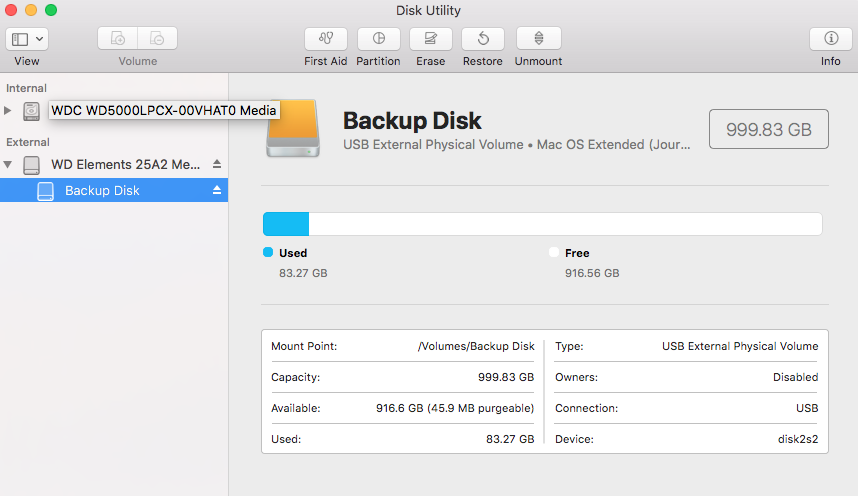


Here is an Apple article on what you should do to prepare a Mac for sale or disposal: It should also be possible to boot into Internet Recovery Mode using Command + Option + R, but Apple's information on this is a bit confusing for an older system only running macOS 10.10 and many people have posted issues when using local recovery mode to perform a clean install like this. Using the bootable macOS USB installer is best since you will be erasing the drive and will want to reinstall macOS for the new owner in order to show the laptop is functional. I then recommend creating a bootable macOS 10.11 El Capitan USB installer using these instructions (read them carefully as there are multiple steps to extract the installer to the Applications folder): The encryption process can take a day or more depending on the health of the drive. Since you have a hard drive I recommend enabling Filevault and let the Filevault encryption process complete. Boot-time disks are mounted during system boot and unmounted on shutdown.It appears you have just a single hard drive installed in your Mac. Unless you have a specific reason to use a logon-time disk, we recommend using a boot-time disk instead. For that, in an elevated command prompt type:

This will permanently deactivate the hybrid boot as well. REG ADD "HKLM\SYSTEM\CurrentControlSet\Control\Session Manager\Power" /V HiberbootEnabled /T REG_DWORD /D 0 /FĪlternatively, if you don't hibernate your PC and want to save a few GBs of disk space, you can disable hibernation. Open an elevated command prompt and type: We recommend disabling the hybrid boot to prevent its interference with the normal RAM disk operations. This leads to another undesirable effect where even a volatile RAM disk retains its contents between shutdowns. It does so between shutdowns, but not between reboots. Windows 10 in its default configuration uses a so-called hybrid boot, which causes Windows to save all allocated kernel memory to the hard drive and reload it on the next boot. To fix this issue, open your antivirus/security product settings and exclude the RAM disk image file location from the paths that are monitored and inspected. It is a common issue with antivirus products when they try to check for viruses in any file that is being written to a disk. There may be another process (usually antivirus) that attempts to open the file at the same time. The process cannot access the file because it is being used by another process", this can be caused by one of the following: Antivirus or security products If your RAM disk takes a long time to mount, unmount, save to an image, or shows a message saying "Win32 error code = 32.


 0 kommentar(er)
0 kommentar(er)
